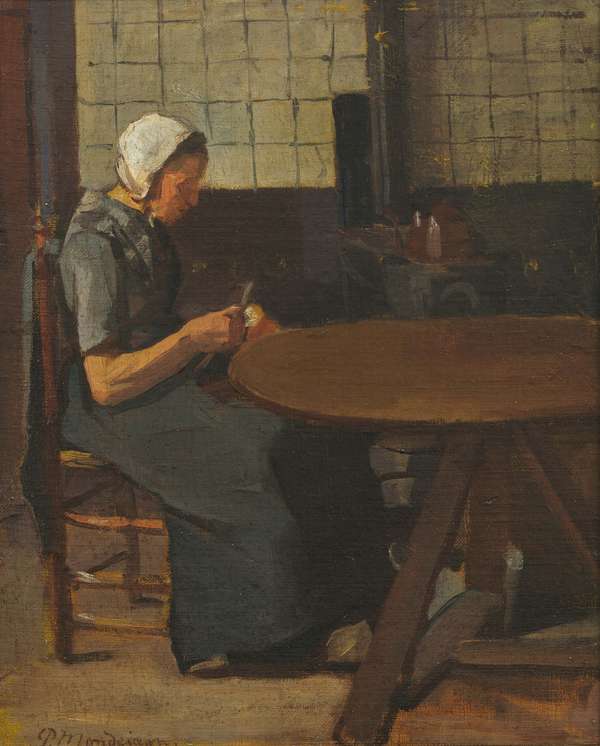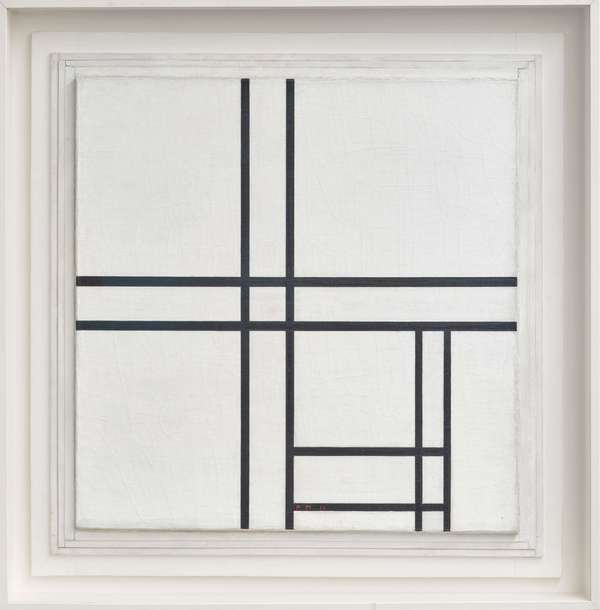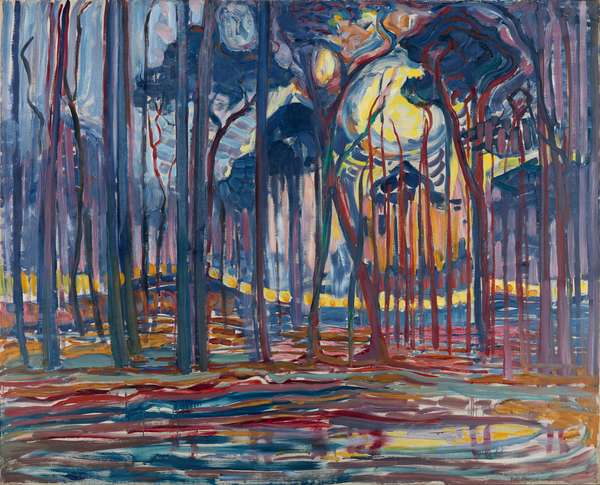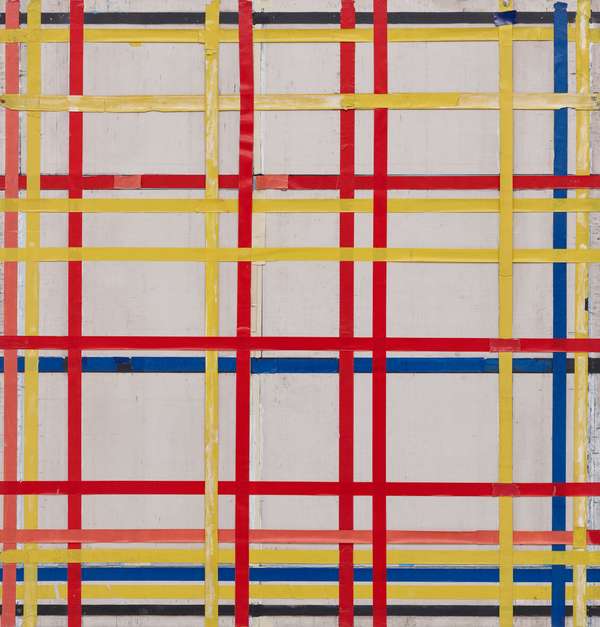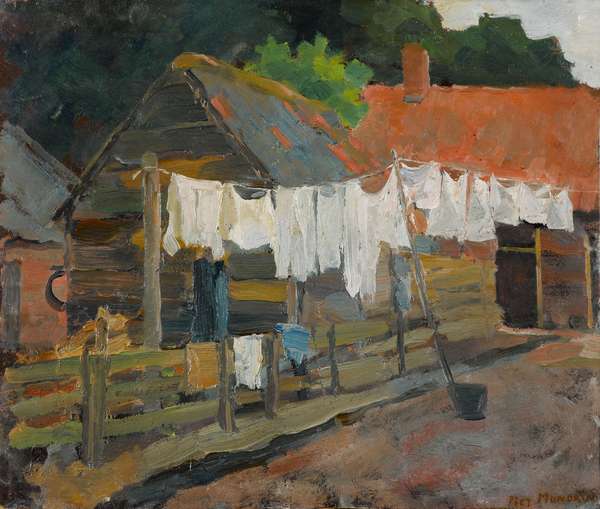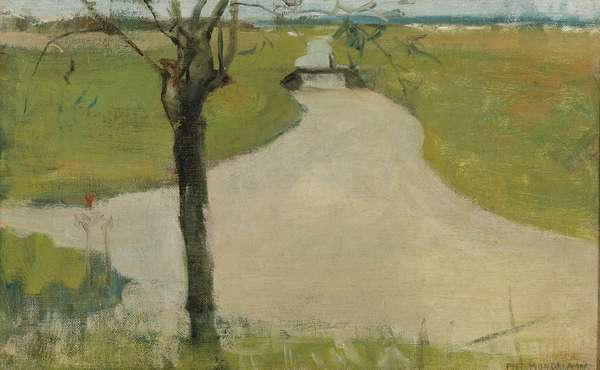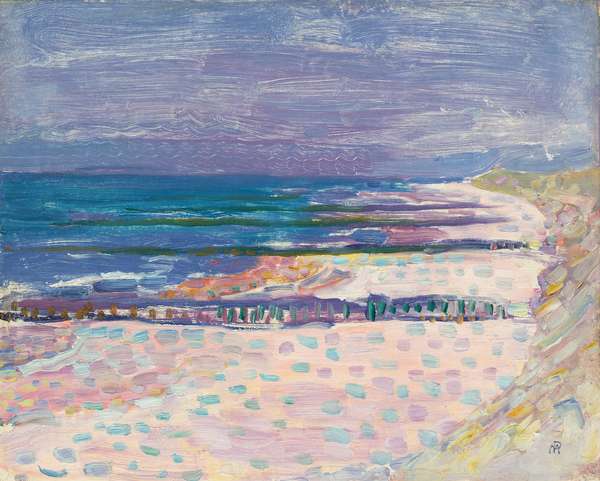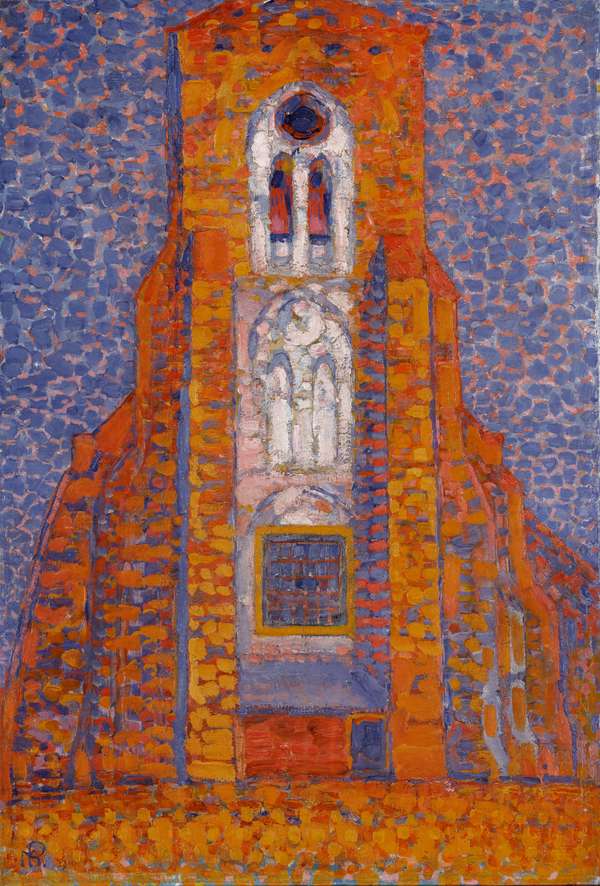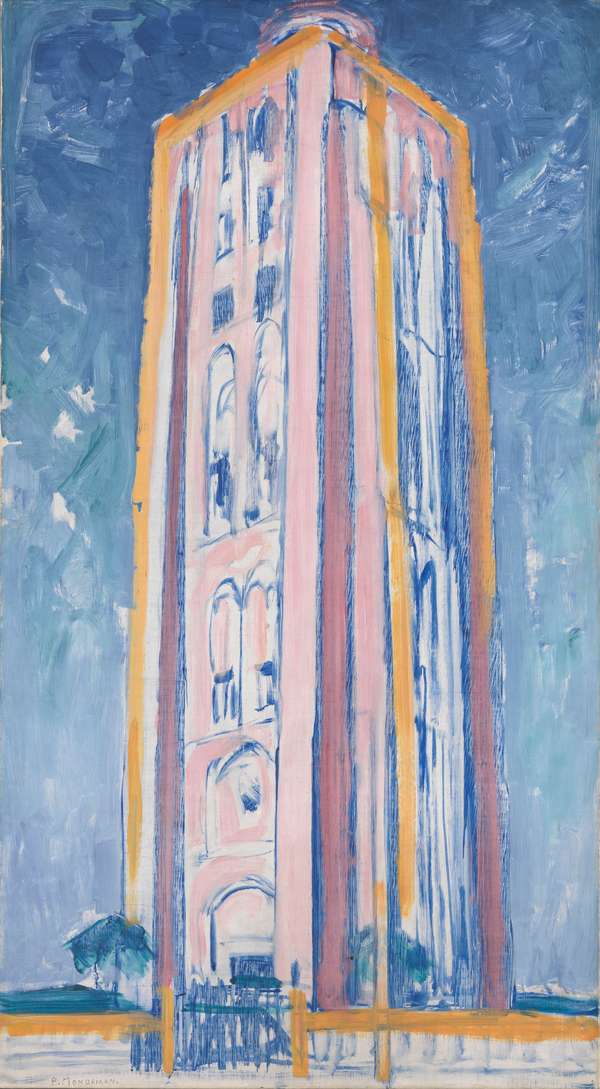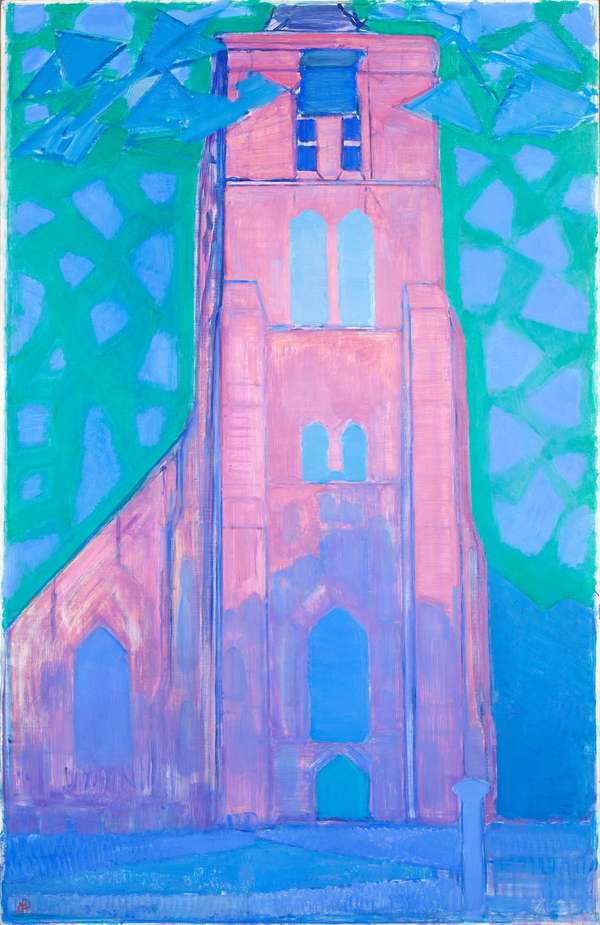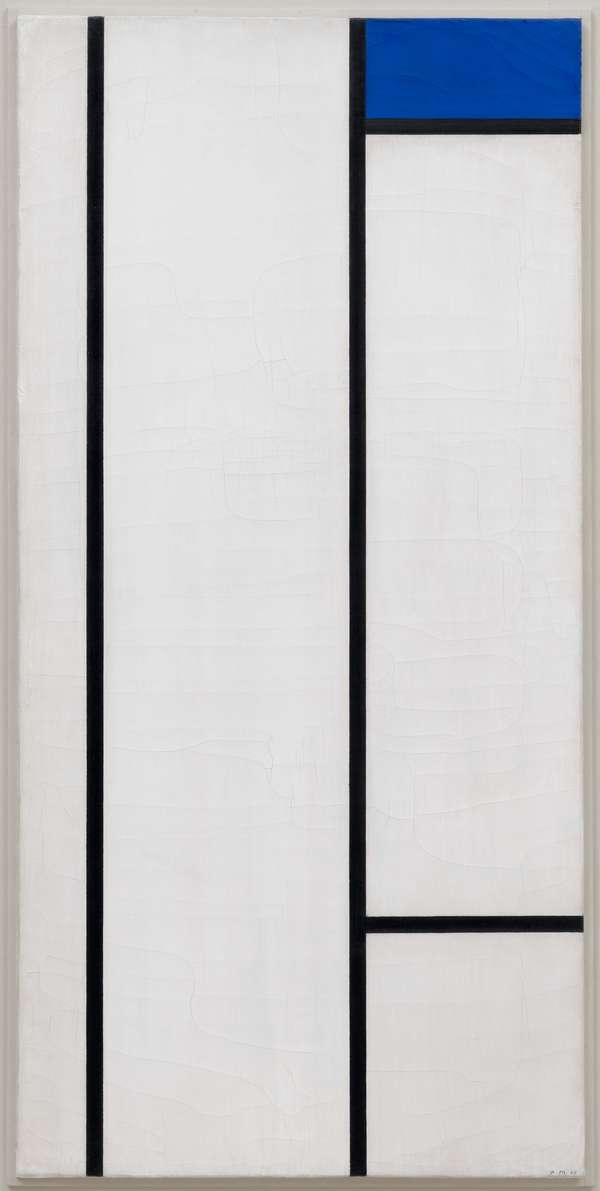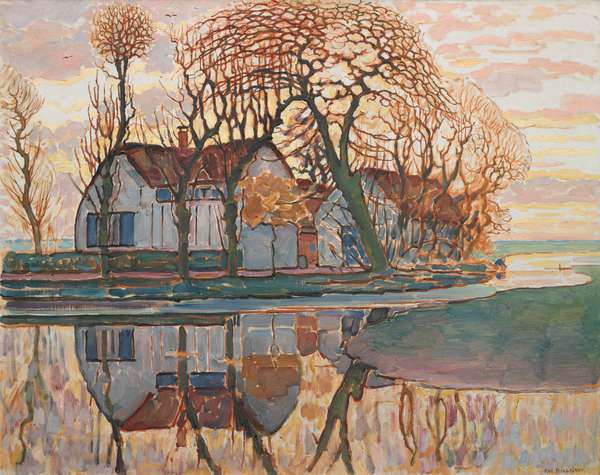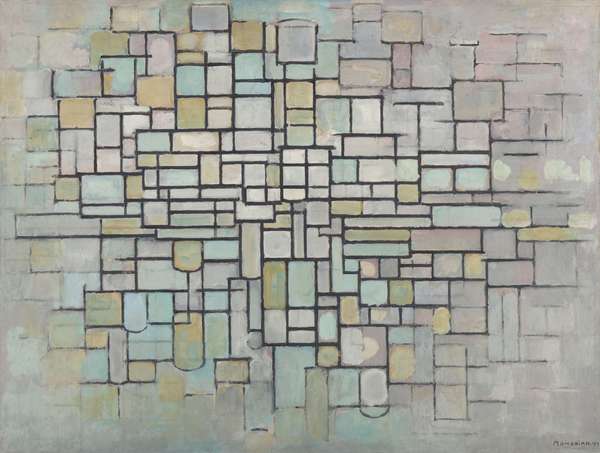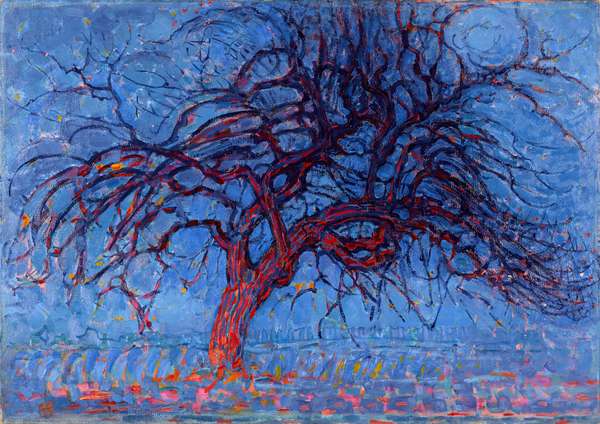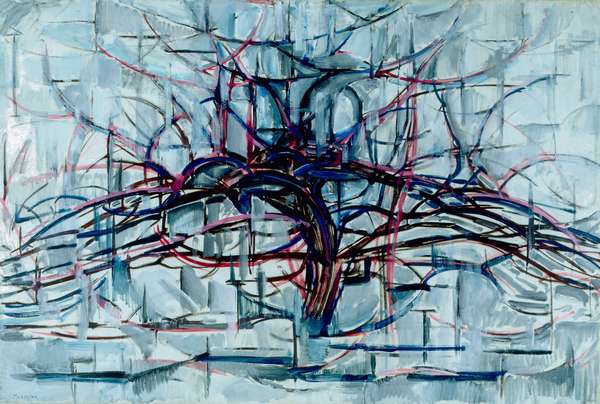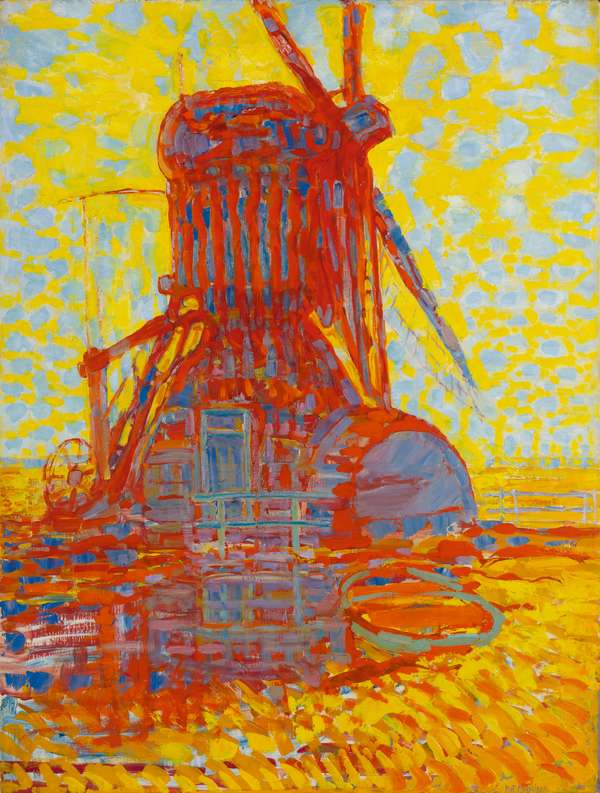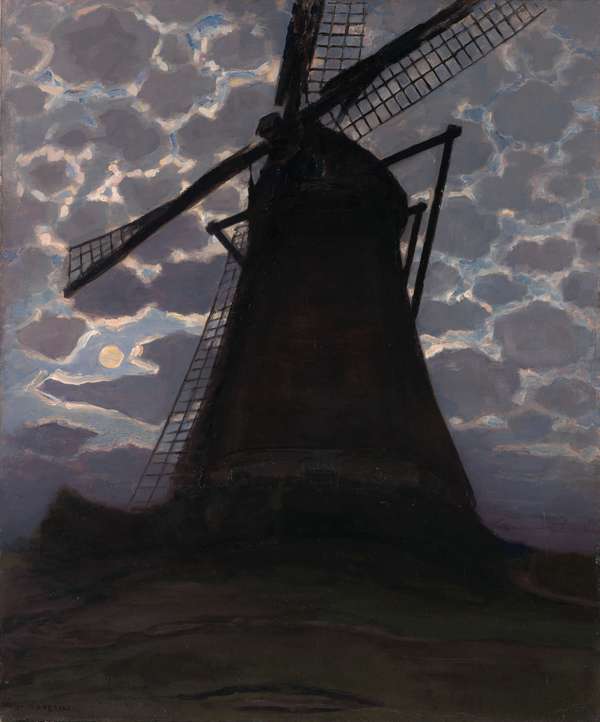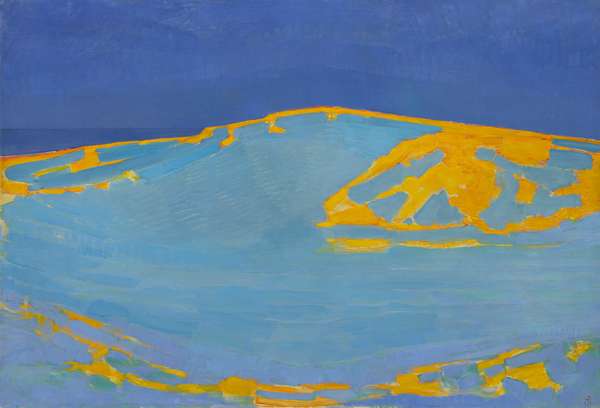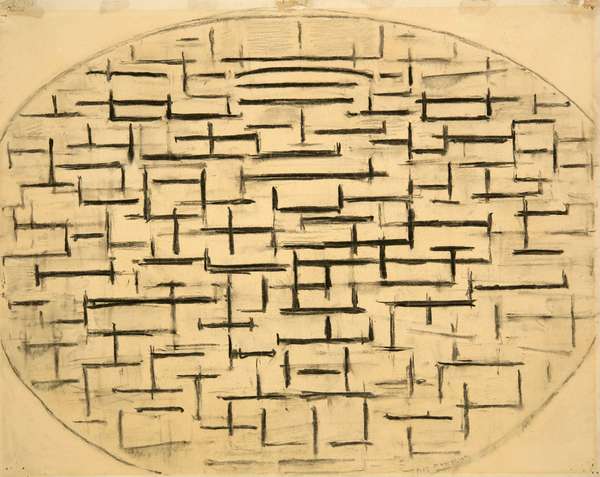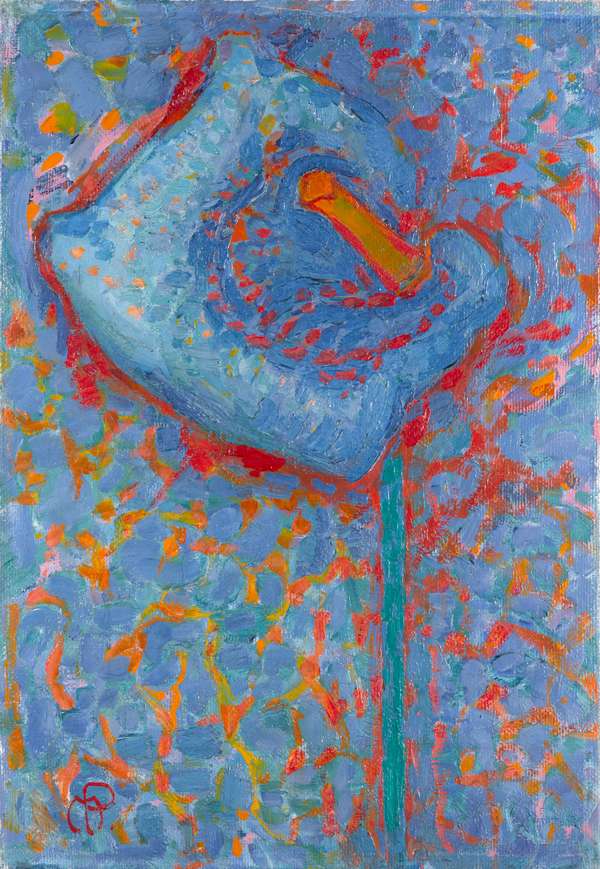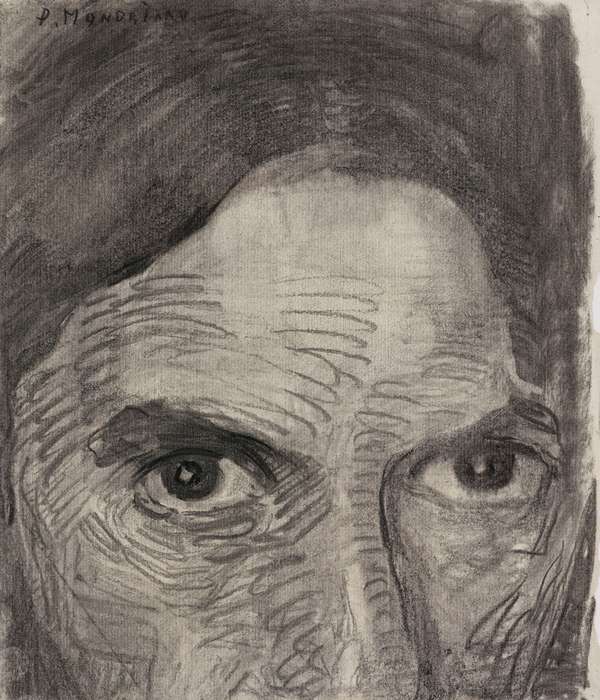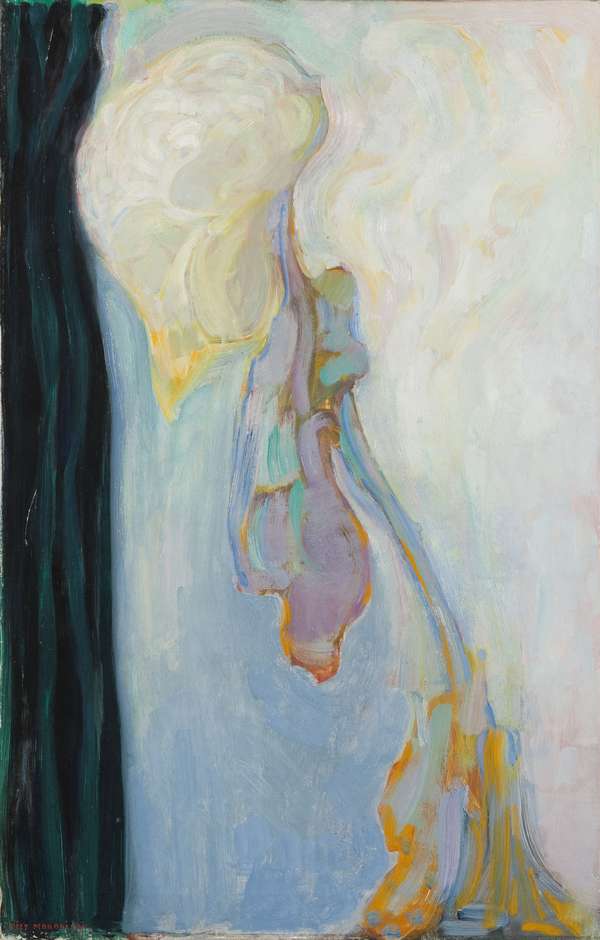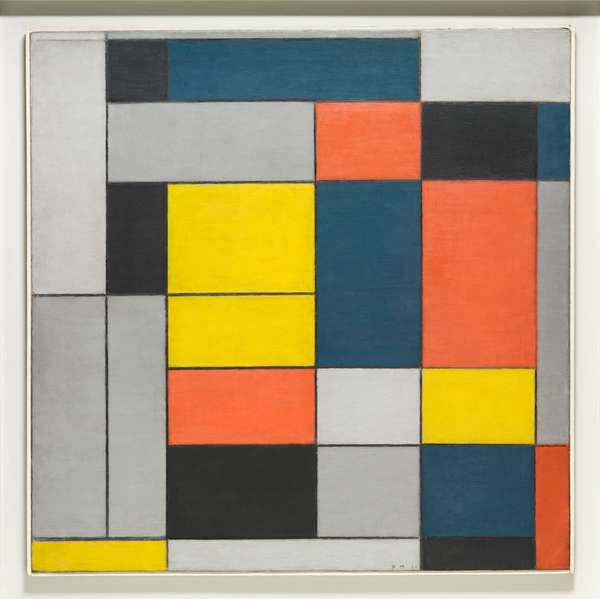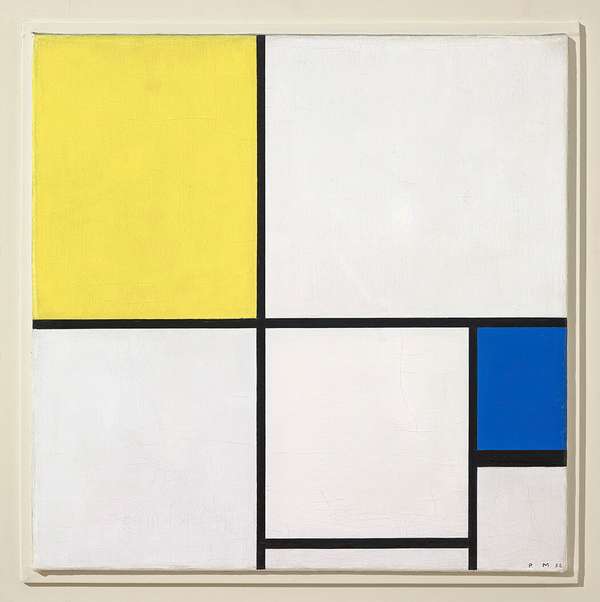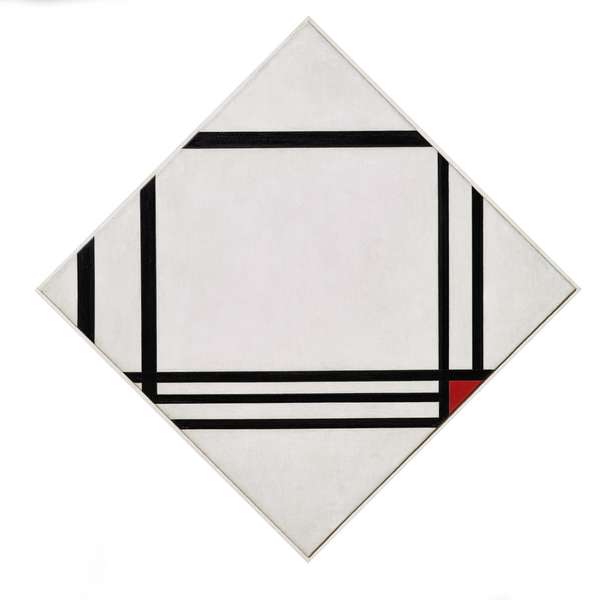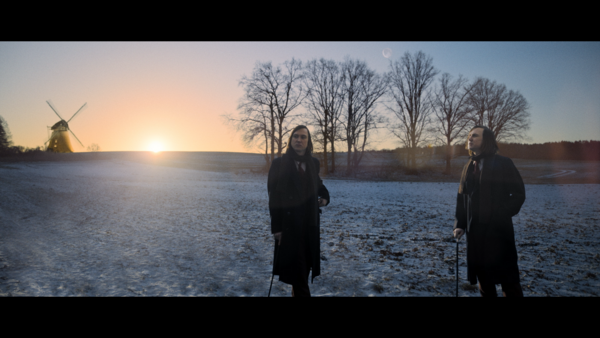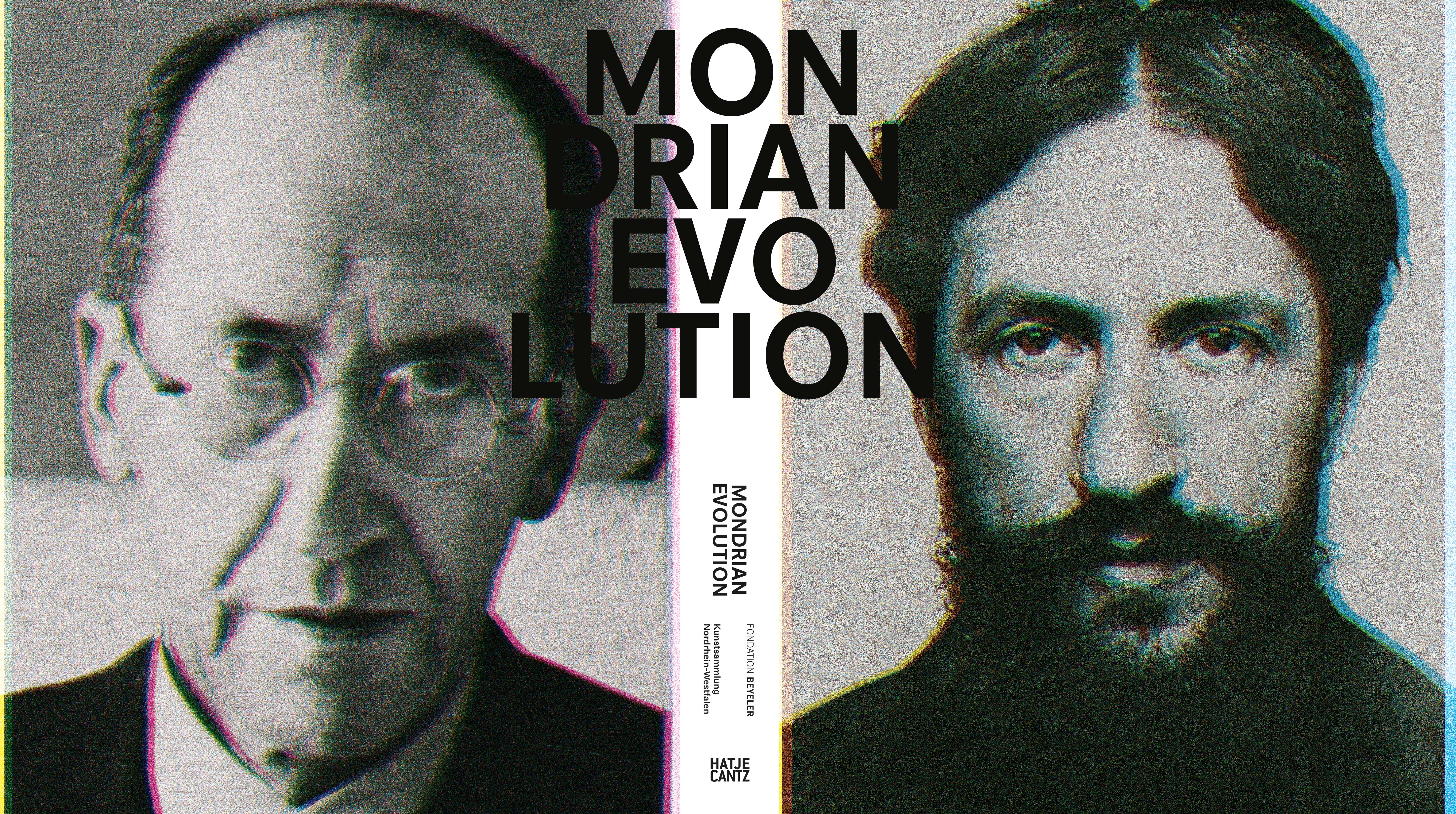Introduction
Dear visitors,
Welcome to the Fondation Beyeler, welcome to the exhibition “Mondrian Evolution”. You will witness how Piet Mondrian (1872–1944), one of modernism’s most famous artists, morphed from landscape painter to avant-gardist and pioneer of abstract art. 2022 marks the 150th anniversary of his birth. The Beyeler Collection holds seven significant works by the artist. Ahead of this exhibition, they have been examined by conservation specialists, leading to some wholly new insights
The exhibition is organised thematically. Rather than individual pictures, the following pages therefore address wider aspects and concerns of Mondrian’s work. His “evolution” was not a linear one, as he experimented fearlessly. For example, having already painted in a non-figurative manner, he returned to figuration for a group of paintings. Works of traditional appearance do not necessarily predate works bearing the hallmark of the avant-garde. It is therefore worthwhile to check the year in which each artwork was produced!
This exhibition of the Fondation Beyeler, Riehen/Basel, has been organised in cooperation with the Kunstmuseum Den Haag and curated by Ulf Küster, Senior Curator, Fondation Beyeler. It will travel on to the Kunstsammlung Nordrhein-Westfalen in Düsseldorf.
Pieter Cornelis Mondriaan (he later changed his name to Mondrian) was born on 7 March 1872 in Amersfoort in the Netherlands. After training as a drawing instructor and studying art in Amsterdam, he worked as an art teacher, scientific draughtsman and portraitist. With traditional landscape painting as his starting point, he developed an expressive, chromatically vivid style. In 1912, he moved to Paris. His encounter with Cubism led to a series of non-figurative paintings in muted colours. Mondrian spent World War I in the Netherlands, where he continued probing the possibilities of abstraction with both figurative and nonfigurative forms. In 1917, he was one of the founding members of the art movement “De Stijl”. Upon his return to Paris in 1919, he focused on abstract compositions featuring rectangles, black lines, white and the primary colours yellow, red and blue. After a few intermediate years in London, in 1940 Mondrian emigrated to New York, where he began experimenting with coloured lines. Mondrian died on 1 February 1944 in New York
At the very start of the exhibition, this juxtaposition brings into focus the impressive artistic journey covered by Mondrian – from a painter of Dutch landscapes and genre scenes to one of the leading artists of radical abstraction.
In this context, Mondrian liked to use the term «evolution». An older woman in Dutch traditional dress sits at a table in a dim room. It is difficult to tell exactly what she is doing: is she peeling potatoes? Is she holding a spindle? A tiled wall is visible at the back; the painting does not show us much more of the room. Mondrian painted this picture around 1893 when he was a student. It hangs next to a fully abstract work from 1934, consisting solely of a white ground and eight lines of different lengths grouped at right angles to one another.
At first glance, the two works have little in common. Yet upon closer examination, it appears that the earlier painting is constructed along several more or less exact lines arranged at right angles to one another. Reducing the painting to these lines would probably yield a composition much akin to the work from 1934. Mondrian once said that he aimed to abstract from nature to such a degree as to arrive at the very essence of the image. In his view, this essence consisted of a white ground, black lines crossing at a right angle, as well as the three primary colours red, yellow and blue, which do not appear in this particular painting.
While the first pair of paintings illustrates Mondrian’s lifelong exploration of the linear structure of images, the second juxtaposition in this room highlights his interest in bringing to light the relation between surface and spatial illusion.
We are looking into a forest backlit by the evening sun, which turns the tree trunks shades of violet and blue. Are the trees reflected in a pond in the foreground? Maybe. Viewed up close, it becomes apparent that Mondrian used thin oil paint and included the white primer as one element of his depiction. The colours bleed into one another in several places and there are drip marks, dissolving the sense of spatiality and making the image appear as what it ultimately is, namely a painted surface. The 1908 painting of the woods near Oele hangs next to an abstract, unfinished work from 1941, New York City 1. In New York, Mondrian began experimenting with coloured adhesive tape, which he layered and crossed. Here, the blue tapes seem to mainly occupy the background, while the yellow ones seem to be located rather in the foreground.
Yet this effect is challenged in one place at the bottom right of the image, where a blue tape overlaps a yellow one. As he had done 33 years earlier, Mondrian seems once more to be addressing the issue of the very existence of background and foreground on the surface of a painting.
This selection of paintings and oil sketches dates from the period between around 1895 and 1908, during which Mondrian was mainly influenced by the Hague School, which combined an impressionist style with the depiction of atmospheric Dutch scenery.
These pictures represent the landscape of the Netherlands, with its farmhouses under oftentimes rain-laden skies, its water ditches reflecting back the sky and the windmills. In the Netherlands, the main function of windmills is to drain the artificially reclaimed land, which lies below sea level. As we can see in the small paintings featuring views of water ditches and willow trees, Mondrian was already interested in the relation between painted surface and spatial illusion. And when he wanted to depict sunlight, he used a trick dating back to 17th-century Dutch art and painted white laundry, which was hung in the sun to dry and to bleach.
In the years around 1910, Mondrian repeatedly spent lengthy periods of time on the Walcheren peninsula in Zeeland on
the North Sea coast. He painted views of the beach and its distinctive breakwaters jutting horizontally into the sea, among them Beach with Five Piers at Domburg, but also vertical compositions featuring towers, the landmarks of this landscape. Two paintings dating from 1909/10 and 1911 represent the church towers of Zoutelande and Domburg. In very different ways, both are literally built with colour: the earlier image is composed of orange-red dots. The Domburg church tower is also represented in evening light. Its upper part is bathed in pink by the sun’s last rays while its lower section is already shrouded in blue evening shadow. Mondrian has captured the atmosphere surrounding the building in a striking manner, using blue polygons that float in front of the architecture and a green background. The lighthouse at Westkapelle is depicted using long vertical brushstrokes, which emphasise the sense of height that emanates from the building. This room also displays a painting from 1936, which rather than a tower features an abstract vertical composition.
Around 1905, Mondrian worked on depictions of a farm near Duivendrecht, a village now adjoining Amsterdam to the city’s south. Between 1914 and 1917, Mondrian returned to this motif and painted it in various light conditions. A key element in the paintings brought together in this room is the reflection of the motif on the water surface.
What is surprising is that in the years before 1914 Mondrian had already produced works inspired by Cubism such as Composition No. II, also on display in this room. These compositions are constructed exclusively from line and colour structures, appearing as manifestations in the pictorial space. Why did the artist return to figuration? In the version of the farmhouse painted with thin oil paint around 1916, on loan from the Art Institute of Chicago, one sees how Mondrian contrasts the flatness in the depiction of the building with the trees’ bare branches, the two elements seeming to merge in certain places. The lattice of the backlit branches seems to form a weblike surface, reminiscent of the structure of Composition No. II. Mondrian’s experiments with the representation of surfaces within the image show just how far abstraction can go without departing from figuration.
Evening: The Red Tree shows the fleeting moment in which the light of the setting sun turns a tree a luminous red against an already deep blue sky. The motif of the tree remained a source of fascination for Mondrian even after his encounter with Cubism in Paris prompted a further step toward abstraction. However, taking nature as his starting point, his focus now shifted: in his striking painting from 1912, which hangs directly next to Evening: The Red Tree, he did not strive to depict the way the tree appears in the light. Rather, he represented it as an image of growth. The colour red, noticeable only at second glance among the picture’s mainly grey hues, does not reflect the light of the sun. In this instance, it could be seen as signifying the return of spring after a cold winter.
Even when they seem already far removed from their model in nature, all the works in this room uphold the idea of painting and art as tied to the notion of organic growth.
This room brings together works from three important periods in Mondrian’s oeuvre, all of them created before he began focussing on radically abstract compositions. Around 1908, influenced among others by Vincent van Gogh, Mondrian produced expressive, colourful paintings. Most famous among them is Mill in Sunlight with its vibrant tones of yellow and red, which caused a scandal upon its presentation at Amsterdam’s Stedelijk Museum; according to one critic, whoever painted like this must be suffering from hallucinations. The paintings produced in the wake of Mondrian’s encounter with Cubism between 1912 and 1914 form the second group. The colour palette has been scaled back in favour of a rich variety of shapes and lines.
Greys and browns set the tone of these paintings. While the compositions are still suggestive of models drawn from nature, these no longer play any role. Mondrian has designed structures that appear in the pictorial space against an indeterminate background.
It would be wrong to presume a direct path leading from these paintings to Mondrian’s abstract work from the 1920s onward, as shown by the group of three windmills, all painted in 1917. It seems that Mondrian aimed to push the reduction to the essential to the very edge of figuration. The windmill in Windmill in the Evening, fully cast in shadow, becomes a flat silhouette, the illusionism of depiction reaching its limits toward abstraction.
During his 1909 and 1910 stays on the Walcheren peninsula, Mondrian worked intensely on the depiction of sand dunes, whose contours are constantly shifting under the influence of the wind. Mondrian attempted to capture the dynamic nature of the dunes by using dots of colour. He also showed the dunes’ protean appearance in the changing light. The largeformat painting Summer, Dune in Zeeland (1910) provides a striking example; we seem to be looking at a large wave shortly before it breaks. The composition follows the outline of an oval, a shape Mondrian would later often use to suggest endlessness.
In the summer of 1914, Mondrian was unable to return to Paris due to the outbreak of World War I. He spent the late summer at the seaside, first likely in Scheveningen and then once more on Walcheren. He drew the view onto the wide expanse of the sea, using the oval as an abstract shape of expansiveness and boundlessness. In paintings such as Ocean 1, he represented the sea itself as a system of black lines meeting at more or less right angles, suggestive – in the broadest sense – of a free arrangement of plus and minus signs.
Mondrian liked to paint at dusk, when colours and colour combinations undergo intense change. He probably studied Goethe’s theory of colours, which describes in detail the chromatic moods that arise in the evening twilight. Mondrian was interested in depicting the way things appear rather than the way things look, as shown by his image of an arum lily. In Mondrian’s rendering, the plant’s white flower appears blue in the evening light, rimmed by a red shimmer. Around the same time, he drew three self-portraits; his face is shrouded in the shadows of dusk, his pupils wide open, receptive to even the smallest amount of light. In one of these self-portraits, Mondrian focused solely on the eyes – without them, there is no painting.
Mondrian’s depictions of plants in the fleeting state of fading or withering are also images of transition. He was concerned less with the fact of dying than with transformation in the spiritual sense, as evidenced by the title of the painting representing a wilting chrysanthemum: Metamorphosis. This may also be an allusion to Goethe and his celebrated poem The Metamorphosis of Plants.
The exhibition’s last room is devoted to the abstract compositions that Mondrian developed in the years after 1917. From around 1920, they led to what Mondrian termed “Neoplasticism”, namely images consisting of intersecting perpendicular lines as well as mostly white, blue, red and yellow areas. Mondrian’s worldwide fame rests on these works, which to this day exert a profound influence on architecture and design. The room’s layout echoes Mondrian’s abstract compositions. The idea is for the paintings to be viewed largely without the influence of other images, allowing visitors to focus on one work at a time. This approach would very much be in the spirit of Mondrian, who probably held the belief that a form of spiritual space could open between his neoplastic images and their viewers. ”
Immersing oneself in the contemplation of a painting such as No. VI / Composition No. II (1920), the coloured areas develop a strangely autonomous existence: some seem to push forward, others to recede into the background. This gives seeing a rhythm, with which Mondrian, a great fan of jazz, underscored these paintings. The longer one looks at Composition with Yellow and Blue (1932), a work held in the Beyeler Collection, the more one feels that Mondrian worked with different shades of white. Yet as revealed by the investigation of this painting by the Fondation Beyeler’s conservators, this is not the case. This impression is due solely to the interplay with the other colours and the orientation of the brushstrokes. The other works held in the Beyeler Collection were also examined and analysed, confirming a long-held hypothesis: Mondrian did not geometrically measure his neoplastic images, but composed them freely and only rarely used preparatory charcoal drawings. He often repeatedly changed and painted over his compositions over lengthy periods of time until he had found what he felt to be the perfect balance. He used no tools such as rulers and worked freehand. On the one hand, the paintings convey an appearance of great rigour and precision; on the other hand, they rest upon the intuition of their creator, who in composing them let himself be led entirely by his artistic sense of form.
The exhibition closes with a work from the Beyeler Collection, one of Mondrian’s famous rotated squares standing on one tip, Picture No. III (1938). The intersecting perpendicular lines, running vertically and horizontally, combined with a red area, appear like a detail of a much larger system that could be extended into infinity. This highlights Mondrian’s ambition for his abstract compositions to permeate all areas of visible and invisible life.
The exhibition ends with a screening of Piet & Mondrian, a short film by Lars Kraume, one of Germany‘s leading film directors. The film takes as its starting point Mondrian’s 1919/1920 essay Natural Reality and Abstract Reality, in which he formulated foundational thoughts and considerations on abstraction in art. Based on Mondrian’s idea of a conversation over a walk at dusk, the striking presence of famous German theatre and film actor Lars Eidinger brings to life Mondrian’s theoretical text.
Duration: around 14 mins
Script: Constantin Lieb
Acting: Lars Eidinger
Production: Felix von Boehm / Lupa Film
Direction: Lars Kraume; 2022
The film project was produced with funding from the Medienboard Berlin-Brandenburg.
Information
Texts: Ulf Küster
Copy editing: Holger Steinemann
Translation: Maud Capelle
Graphic design: Thorsten Romanus
Feedback regarding the hall texts can be sent to: kunstvermittlung@fondationbeyeler.ch
#BeyelerMondrian
#MondrianEvolution
Reproduced works by Piet Mondrian:
© 2022 Mondrian/Holtzman Trust
For full photographic credits, please refer to p. 256 of the exhibition catalogue Mondrian Evolution.
Mondrian Evolution
Designed by Irma Boom
Edited by Sam Keller and Ulf Küster
for the Fondation Beyeler, Riehen/Basel, Switzerland as well as by Susanne Gaensheimer, Kathrin Beßen and Susanne Meyer-Büser for the Kunstsammlung Nordrhein-Westfalen
Hatje Cantz Verlag, 2022, 264 pages, 306 illustrations
CHF 58.-
Further publications on Piet Mondrian are available from the museum’s Art Shop: shop.fondationbeyeler.ch
#BeyelerMondrian
Subscribe to our newsletter and follow us on social media. This way you will receive all the latest information.
Newsletter
The exhibition is generously supported by:


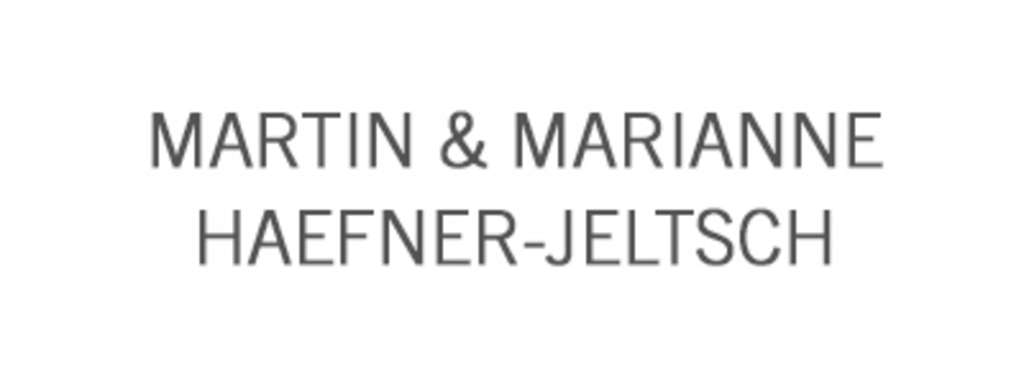





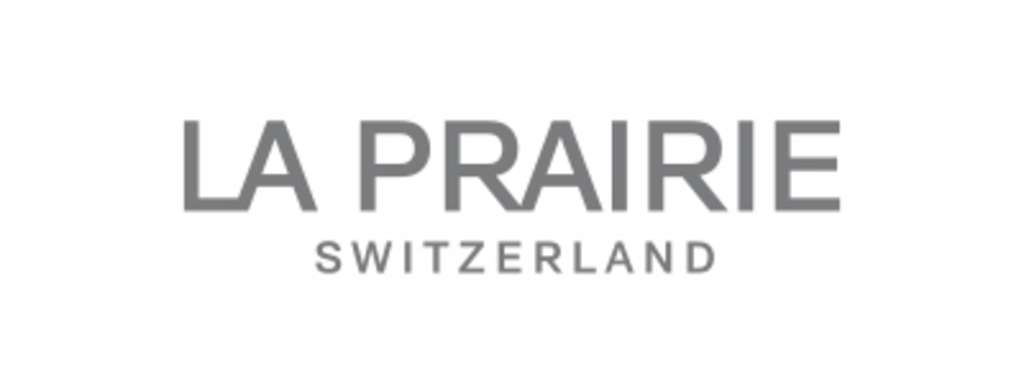








as well as further patrons who prefer to remain anonymous.
The exhibition guide has been produced with the kind support of

